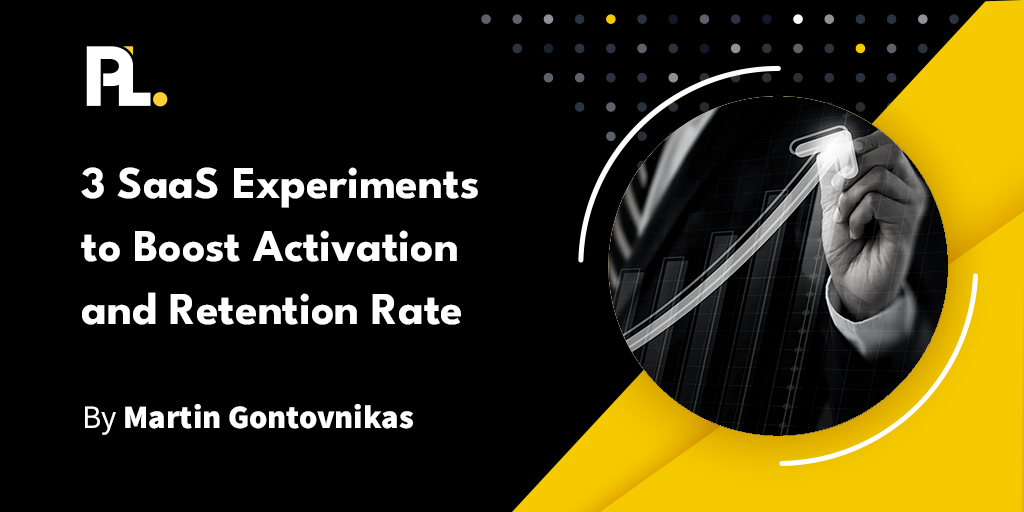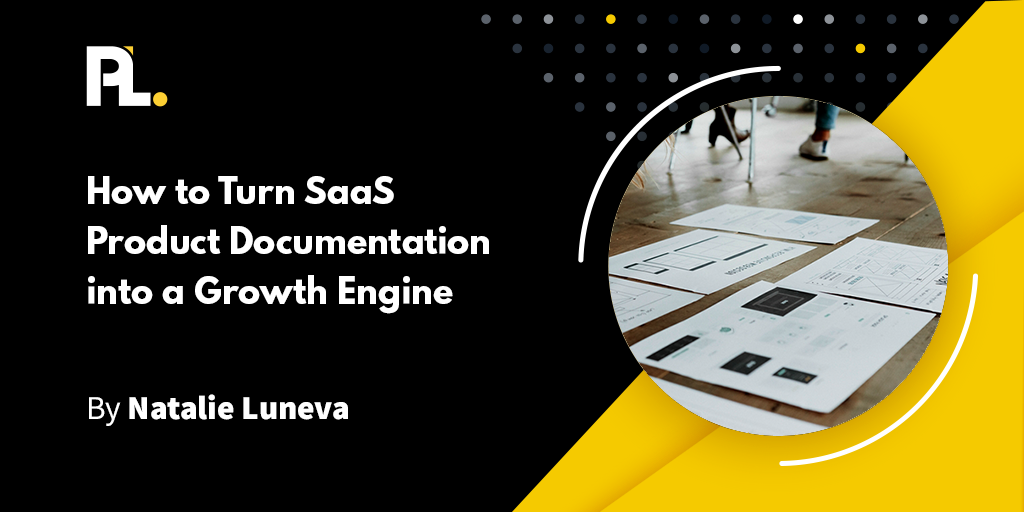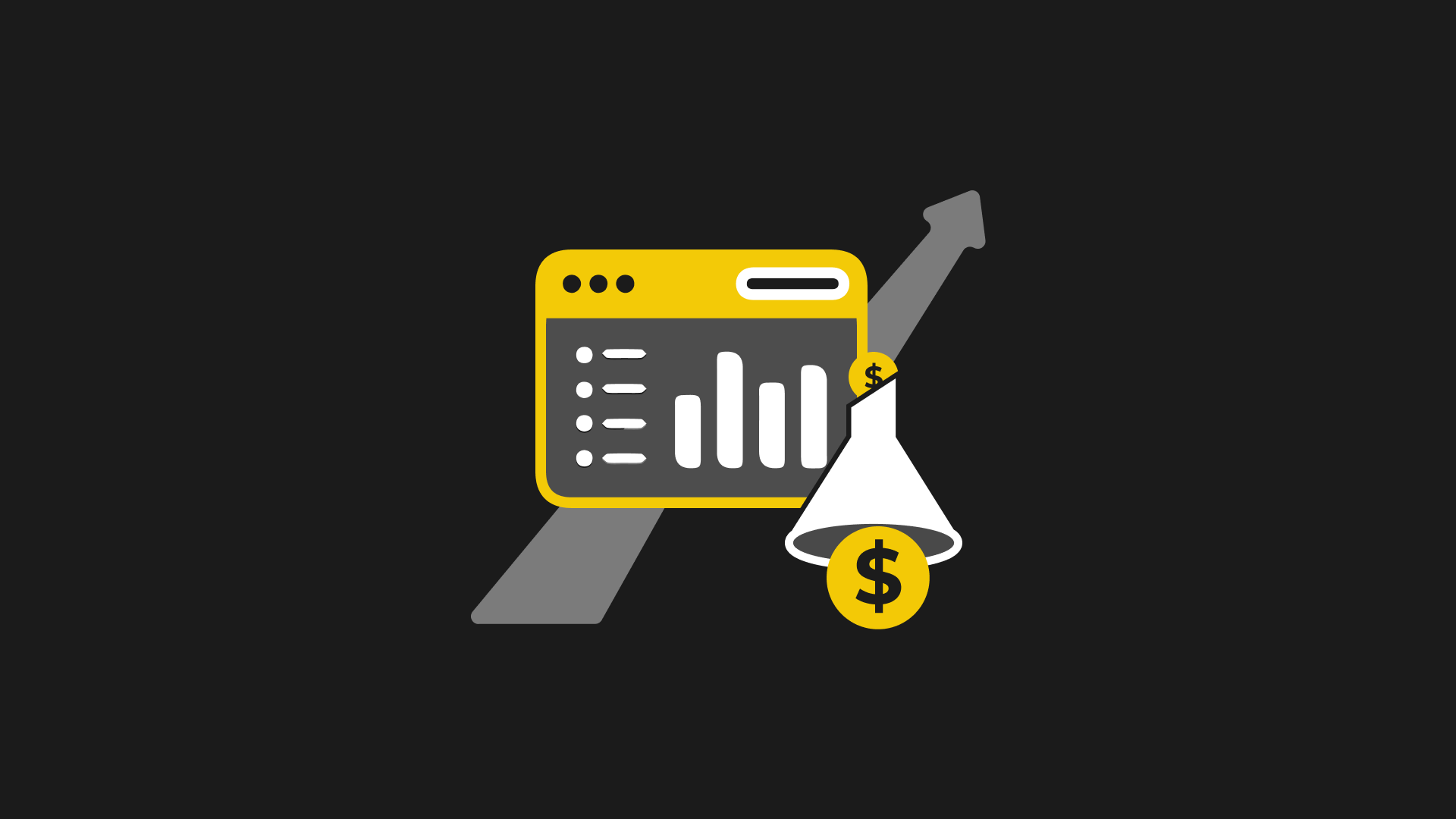
Right now, product-led growth (PLG) is having a moment.
Awareness is at an all-time high. Most people are still rosy-eyed over how PLG promises many benefits for their business. Most people can recite some of the main ones like their favorite song: lower customer acquisition costs, more signups, and faster growth.
But building a wildly successful product-led business strategy?
That’s another story.
After helping hundreds of companies implement PLG, I’ve seen some wildly successful product-led companies and I’ve seen a lot of companies that think they’re implementing PLG when in reality they’re just slapping on a free trial onto an existing product.
I hate to be the bearer of bad news, but there will be a lot of PLG attempts that fail in the not-so-distant future.
Why?
The leaders at these companies won’t take the time to build a company-level product-led strategy.
Too often, PLG is seen as a product initiative. I get it.
PLG has the word “product” in it.
But, as you’ll soon learn, you need to integrate PLG as a company-level strategy for it to stick.
In this article, I’ll walk you through a step-by-step process so you can build a recession-proof product-led strategy. My goal is to help you build a wildly successful product-led business and prevent you from making a lot of mistakes along the way.
If you prefer video, you can watch a version of this article below.
To build a successful product-led strategy, you need to follow these three steps.
- What it means to be “product-led.”
- The one big shift you need to make as a business.
- 5 questions to build a winning product-led strategy.
Let’s dig in!
What it means to be “product-led”
The starting point for any good discussion, meeting, or workshop on a new strategy should be a shared understanding of what being “product-led” actually means.
Before I answer the question of what it means to be “product-led,” I want to ask you a question.
Can you have a free trial and still be sales-led?
The answer is yes.
Why is that?
Just having a free trial doesn’t mean you’re actually able to help your users get value from your solution. It’s a step in the right direction, but it is by no means the be-all and end-all.
Think of the best free tool you’ve signed up for recently. Were you able to get to value quickly? Chances are you were. Because of that value exchange, were you more likely to purchase that product? Chances are: yes.
On the flip side, think of a free product you signed up for when you weren’t able to get to value.
What did you do? Did you ditch it? Never come back? Uninstall the app?
Chances are you did.
This begs the question: if you can’t get users to value in a free experience, are you even product-led?
Having a free trial is the package. Providing value first is the mission.
What’s driving this whole movement to PLG is the fact that consumers demand a value-first experience where they try a product before they buy. And if you can’t do it, they can just as easily test out another solution; competition is fierce.
So hopefully, by now I’ve convinced you that being “product-led” is more than a free trial. It’s a way of doing business where you provide value first to the user.
If you’re on board with that approach, there’s one big shift you need to make as a business.
This one shift might seem small, but it changes how your entire organization approaches business.
The one big shift you need to make to become “product-led”
To understand the big shift, you first need to know what the fundamentals of business are.
To keep things simple, I’ve narrowed down the fundamentals of business into 4 main categories:

- Acquire = Getting people to find out about your business.
- Monetize = Converting people to customers.
- Engage = Delivering value through your product/service.
- Expand = Increasing customer value.
With the introduction of PLG, have the fundamentals of business changed?
The answer to the question is no. ????
So what has changed with the introduction of PLG?
You need to prioritize one of the fundamental elements of doing business earlier.
In a PLG model, you need to engage before you monetize.

What impact does this one switch have on how you do business?
Quite a lot, actually.
It changes how you acquire customers. Instead of promoting a demo request as your main call to action, you’re providing a clear way for people to engage and get value from your product initially (i.e. a free trial or freemium model).
It changes your focus on engagement. For many companies, helping users achieve value in a product was more of an afterthought. Once the contract was signed and a customer signed the dotted line, customer onboarding kicked off. Getting customers to value is a cost center for most sales-led companies. Yet, for product-led companies it immediately becomes a profit center. If your onboarding sucks, you’re losing money. Not many users decide to come back after a bad first-time onboarding experience.
The difference between the sales-led and product-led funnel is that a sales-led funnel is a conversion funnel. While a product-led funnel is a value-first funnel. A product-led company optimizes their conversion rates for value.
When it comes to monetization, this also changes quite a bit. In a sales-led company, you’re looking at monetizing people early in their journey so you need to have a few calls just to clarify what the product is about, how it’ll help them, and then give a quote. Everything about it screams this will take a long time.
A product-led company treats monetization as a discipline that is meant to be painless. Once you’ve received value from the product, the next step is to monetize free users. Product-led companies do this by showcasing their pricing upfront and making it easy for people to self-select which plan is right for them.
For expansion in most sales-led companies, it’s more of a manual process with customer success. However, many product-led companies bake expansion into their SaaS pricing model. For example, HubSpot charges per contact. As your business grows and you add more contacts to your CRM, you’re going to get charged more each month. This is a natural way to expand a customer's value without even adding additional products to sell to customers.
So what does this mean for you?
It means as a business, you’ll need to prioritize user success over closing deals (at least initially) which sounds like a counterintuitive way to do business.
Serve first, then sell.

Now, why would any business prioritize making users successful before closing deals?
It all comes down to this one sentence:
Your users’ success will become your success.
If you truly engage your users and help them become successful, the next natural step for them to consider is purchasing your solution. If you jump straight from acquiring users to monetizing them, they’re going to run away from you.
Let me share a personal experience of this big shift in action, and how not making it resulted in an embarrassing failure.
When I was at Vidyard in 2016, we launched a free trial for our video hosting product. Our sales-led model was working extremely well, but we thought that launching a free trial would allow us to grow even faster. To get value in our 14-day trial, a user would need to complete quite a few actions, such as:
- Upload a video to the platform.
- Integrate Vidyard with their marketing automation platform.
- Embed the video on their website.
- Drive traffic to that website.
- Review analytics (the really cool “aha moment” part).
We thought this was doable in 14 days, but the reality was that most people who signed up didn’t have a video ready to upload. So they just clicked around a bit and then never returned.
Our Sales team noticed the free trial was underperforming, so they started reaching out to the free trial users to salvage the conversion rate.
This ended up scaring the free trial users away even more.
So what went wrong here?
As a business, we simply slapped on a free trial to our existing monetize step.
We were building another monetization funnel, not an engagement funnel. Eventually, we ended up deprecating that initial version of a free trial because it was unsuccessful.
But here’s the thing.
The main reason it was unsuccessful was because we didn’t make that one big switch.
Luckily, Vidyard didn’t give up on its product-led journey. The next product they launched was completely free and allowed you to record videos using a Chrome Browser. It was wicked simple to record a video and send it to a colleague. Getting to value took less than 2 minutes.
Vidyard truly made it easy to engage as a user.
In that second attempt, they were able to successfully make the switch and deliver enormous value quickly to users.

As a result of making this big switch, Vidyard generated 100,000+ users in the first 12 months of launching the product – and it’s now been used by millions.
And you can bet a lot of those users have turned into happy customers.
Now that we’re on the same page on what it means to be “product-led” and why user success is at the heart of this go-to-market strategy, we can break down how you can build a winning product-led strategy.
How to build a winning product-led strategy
First off, what is strategy?
Strategy is about making choices. With limited resources and time, we have to make choices as to how we allocate both.
A good strategy is simply a framework that helps us make better choices. It combines both rigor and creativity. It’s about increasing our odds of success, not guaranteeing it.
The problem with most strategies is this: 99% of the time, it’s just focused on you.
What do you want to achieve? What do you want to do in your business?
It’s fun to talk about, and no doubt helps set directions, but there’s always been one piece missing for me: the user.
Building a successful product-led business is hellbent on being incredibly great at helping your user’s become successful – so your strategy by nature needs to reflect that.
Five questions to build a winning product-led strategy
To build your product-led strategy, I’m going to ask you five questions that will guide you through the process.
You’ll get the most out of this exercise if you follow along with the template we provide below.
The first question is all about your ideal user.
Who is your ideal user?
Every product has an ideal user profile it attracts.
ClickUp attracts those who love productivity. Netflix attracts those who love binge watching. Amazon attracts those who love the convenience of buying online.
Your business is no different. Your ideal user is someone who thrives at using your product. They get enormous satisfaction and value from it. They’re sticky, and they’ll either be able to pay for your product, or they’ll have the influence to encourage a buyer to pay for your product.
Now that we’re clear on what an ideal user is, how on earth do you identify them?
Maybe you’ve done a lot of user research and have a pretty good idea, but even then, how do you narrow down your list of potential ideal users.
Note: there are countless ways you can identify your ideal user. Don’t feel like you have to follow my process below. This is simply a potential way you can do it.
Below I’ve mapped out three steps that will help you identify your ideal user.
Step 1: Write down as many ideal users as you can
Don’t aim for perfection here. Just write down as many ideal users as you can think of.

Remember, a buyer is not always the user. For instance, if you’re selling a marketing automation product, the VP of Demand Generation might purchase the product (a.k.a the buyer) but the Demand Generation Specialist is the user of your product.
Once you’ve listed out at least five ideal users, let’s narrow it down.
Step 2: Identify a user’s likelihood of winning
The name of the game in being product-led is “user success,” so you should pick an ideal user who has a high likelihood of achieving success.
For instance, if you have a very technical application, will marketers or developers be better suited to finding success?
As a former marketer, I’ll throw myself under the boss and tell you it’s the developers that’ll be more successful.
Users “win” because of three main reasons:
- Motivation: They’re extremely motivated to play the game (either something is pushing or pulling them in this direction).
- Ability: It’s relatively easy for them to pick up and play the game (maybe they have programming experience or some ability that lets them pickup your product easily).
- Prompts: It’s top-of-mind for them. They’re constantly getting triggers to fix this problem, whether those are internal or external triggers.
BJ Fogg, a behavioral psychologist, has done incredible research that proves that as long as a user has these three characteristics, they can achieve any target behavior (a.k.a achieving success in your product).

For our next step, we’re going to get you to identify the motivation, ability, and prompts for each ideal user profile you mentioned above.

If you’ve been following along in the Notion template, you’ll automatically start seeing a trend where your ideal users with the highest motivation, ability, and prompts float to the top.
This doesn’t necessarily mean you’ll just go ahead and pick the top one. You’ll want to have a discussion with your go-to-market team and clarify who your ideal user is. For best results, have them go through the first two steps and then come to the discussion prepared with their own ideas on who they think the ideal user is.
Then and only then can you move to the next step.
Step 3: Identify your Ideal User
Identifying your ideal user has to be done as a team. Sorry lone ranger!
You want to have a passionate discussion on who this ideal user is. You need to aim to get as much research and data as possible to back up your decision to pick this ideal user, but do keep this in mind…
You’ll never have enough research to make a decision with 100% accuracy here. And if you do, that probably means you analyzed this question to death, and you spent way too much time and energy trying to get it right.
If you find your team is still unclear on which ideal user to choose, I recommend asking these three questions:
- Use your head brain and ask: “what do I think is the right ideal user for our business?”
- Use your heart brain and ask: “what do I feel is the right ideal user for our business?”
- Use your gut brain and ask: “what do I have the courage to say our ideal user is?
Research shows that using your three brains is scientifically proven to aid you in making better decisions when there’s uncertainty. You can read more about the science behind it here.
So now my question for you is, who is your ideal user?

Once you’re done going through this step within your template, let’s go a step deeper and uncover what success looks like for that ideal user.
What is user success?
When a user is successful, what are they now capable of?
When you play Mario, and you pick up a flower, Mario grows 2x bigger, can spew fire, is basically invincible, and can be a complete badass.

Our product is the flower.
User success is that badass version of Mario.
Here are a few less exciting but probably more relatable examples to help you identify user success for your product:
- Canva: Design anything and publish anywhere.
- Hotjar: Get the insights you need to create digital experiences your users love.
- Google: Find relevant answers to any question you have.
- Shopify: Build your dream business.
- Zapier: Automate all your busy work.
Pro tip: user success represents an upgraded world that your ideal user will eventually experience. That upgrade can exist across a spectrum of attributes: time, speed, simplification, freedom, a feeling, etc.
Step 1: Write down as many options for what user success is
Examples:
- We do X, they’re able to do…
- The [adjective] way for [people] to [do something], [benefit / outcome]
- Everything for [target market] to achieve [main outcome]
- End-to-end platform for doing X
Step 2: Pressure test your user success statements
User success should meet the following criteria:
- It communicates what it’s not.
- It inspires.
- It is simple to understand.
- It’s achievable with your product.
- It’s realistic for your Ideal User to achieve.
Take each of your user success statements through the criteria and try to see which ones check all the boxes.
Once you’ve found a couple of user success statements, it’s time to narrow it down.
Step 3: Narrow down your user success statement to a one-liner
For example, at ProductLed, our user success statement is:

What’s yours?
Once you’ve honed in on what user success looks like for your company, it’s time to dig into how you empower users to win.
How will you empower your users to win?
Your users need help. Just like Batman needs the batmobile and a high-powered suit to put villains behind bars. Your users need support to achieve success.
After analyzing hundreds of top product-led companies, I can confidently say there are three main ways you can empower users.
1. Make It Frictionless to Get Started
Want to join a new gym?
There are two options:
- Sign up for a gym with a $50 per month fee & a minimum 3-month commitment.
- Or sign up for our gym membership. The first week is free!
Which option do you join?
If the gyms are the same, you’ll most likely opt for the free trial option.
It all comes down to science.
A free offer increases your motivation and ability to achieve your target behavior.

It gets you one step closer to your goal.
One of the biggest barriers we can put in our users' way is a gate that prevents them from testing out the product on their own.
Giving users a free way to get started often looks like providing a free trial or freemium model to start their journey. This is key to helping empower your users to win from a motivational standpoint.
Making anything free increases one’s motivation and ability to achieve user success.
However, just giving them a free experience to start isn’t enough…
2. Make It Frictionless to Experience Value
You’ve probably heard some variation of this before. Whether it’s delivering a quick time-to-value, creating an incredible onboarding experience, or providing great UX. They all tie back to creating an exceptional experience that helps users experience value before the paywall.
World-class product-led companies all make it incredibly easy for you to experience value. Exceptional products give you capabilities you never thought possible.
- Canva makes it so easy to design you feel like a designer without being one.
- Zoom makes communication so frictionless we prioritize video meetings over face-to-face meetings for work.
- Amazon makes buying so frictionless we buy more products because of the convenience.
Frictionless value is one of the pillars of how you empower your users.
Back to the science part, frictionless value = making it easier for your users to experience value.

No surprise here, but making it easier to do something means you, as the user, are more likely to achieve success.
Even if you do just the first two things, you’re going to be well on your way to empowering your users to win, and I’d recommend starting with the first two.
However, there’s one last big way you can empower your users.
3. Go Above and Beyond to Help Users Succeed
For the last component, it’s really about providing absolutely everything your user needs to succeed. It’s so easy to get caught up in solving everything with your product but for a lot of companies this actually limits their ability to serve users.
Here’s an example of this limitation:
Let’s say I am the CEO of a project management application. We notice that many users are struggling to manage projects. We invest a ton of time and resources in making our product better to help our users manage their projects better, more efficiently, and make the whole process simpler. We see a moderate improvement. What went wrong?
We tried to proactively address this issue but failed to make a dent in actually improving it…
The issue was we failed to address the knowledge gap of the user. We could have interviewed the top users who were using the tool and showcase how they managed their projects. We could have identified the patterns they used to run projects, and created educational content to help them manage more effective projects.
So what’s the main takeaway here?
The product is a way to help users achieve their goals, but there are many ways you can support users to achieve success.
Here’s another example from a company called Databox.
At ProductLed, we wanted to automate our daily company scorecard so we could track our core KPIs easier.
When I started using the product, I was amazed at how easy it was to use. However, when it came to setting up some custom metrics we built, I ran into some difficulties. But they made it super easy to book a call with a Technical Sales Consultant.

Within 30 minutes on a call, I was able to easily set up everything and signed up for their Pro Plan to gain access to some features I needed for my use case.
It was painless, easy, and they went above and beyond to help me find value.
To really help your users succeed, I encourage you to think beyond the product. How can the rest of the organization support user success?
Write blogs about core user problems. Support users who get stuck setting things up. Provide integrations that help users solve the holistic problem easier.
What can you do to give users everything they need to succeed?
Now that you’ve answered the first three questions of building your product-led strategy, you’re well on your way to creating clarity across the organization. However, your team needs an easy way to remember everything.
A mission statement is how you make that happen.
What is your mission?
A mission statement connects with your vision and gives your business direction.
It communicates several ideas:
- What you do (i.e. design tool).
- Who you serve (i.e. ideal user).
- How you help.
- What difference you make in the world (i.e. user success).
Here are some examples to help you identify your mission statement:
- Canva is an online design and publishing tool with a mission to empower everyone in the world to design anything and publish anywhere.
- Hotjar gives businesses of all sizes the insights they need to create digital experiences their users love.
- Google organizes the world’s information and makes it universally accessible and useful.
Why is a mission statement so important?
- It gives you direction as a business.
- It makes it clear what your end goal is.
- It’s also just a simple reminder that ties the first three questions together.
So how do you create a simple mission statement?
If you’ve answered the first three questions, this is actually easy to do. All you have to do is input the answers to the first three questions in one of these templates:
- [Company name] empowers [your ideal users] to do [user success]. We just so happen to be a [what you do] tool.
- Our mission is to provide a free, useful and accessible [type of] tool that empowers [our ideal user] to [achieve user success].
- Make [category of what you do] frictionless.
Don’t worry if your V1 mission statement isn’t as polished as some of the examples I’ve shared earlier. It’s better to start with something rough and then refine it over time.
Once you’ve mapped out your mission statement, it’s time to work through what internal capabilities you need to build to make your mission a reality.
What capabilities must you have?
First off, what’s a capability?
A capability is simply how your company delivers on its mission. The core capability of any business is how you deliver value. This capability cannot be outsourced. A core capability is ultimately what makes or breaks a business.
I’ll give you some examples of supporting capabilities:
For Google Search, their mission is to make the world’s information universally accessible and useful.
Google Search is able to deliver on its mission by developing capabilities such as:
- Search algorithms to organize the world’s information.
- Artificial intelligence to surface the best answers.
- Accessible design for anybody to search.
For Zoom, their mission is to make communication frictionless.
To support its mission, Zoom has built these core capabilities:
- Simple to use.
- Reliable.
- Easy to share and join.
For Canva, their mission is to empower everyone in the world to design anything and publish anywhere.
Canva has developed several core capabilities that support their mission:
- Simple to design.
- Easy to get started (i.e. templates).
- Publish anywhere.
Now you still might be thinking, how is a capability different from the third question around how we empower our users to win?
There’s no doubt some overlap. However, the main difference is that a capability is core to how you deliver value.
For instance, if you run a security company, you should have security innovation as a capability because you should be a leader in this field.
For us at ProductLed, we need to be great at user research; it’s how we identify all the problems our users encounter along the journey of building a successful product-led business. It’s core to how we deliver value to our customers and users.
Now that you’re familiar with what company capabilities are, it’s time to identify the first main capability you should build-out.
What’s the #1 capability you need to build?
If this is the first time you’re going through this exercise, please don’t worry about identifying supporting capabilities.
Initially, just focus on your core capability.
For 99% of the leaders at companies reading this, I want you to focus on developing one capability: delivering a quick time-to-value.
As we mentioned in the beginning, a focus on creating an engaging experience before monetizing users is pivotal to making this whole strategy work.

If you focus on this core capability for the next year, I promise you’ll find out what those supporting capabilities are rather quickly.
But this oversimplification is directional and will align your team on what is important.
By now, we’ve had a chance to go through five key questions to build your product-led strategy.
The next step for you is to identify who is on your PLG task force. Then, clarify the answers to these five questions as a team so you can build your one-page product-led strategy.
By doing so, you’ll create incredible clarity at your company to install PLG as a company-wide strategy.
Want help building your product-led strategy?
We know it’s a lot of work building a product-led strategy as a team. And figuring out how to empower your users and deliver value isn’t easy.
That’s one of the main reasons why we run the ProductLed MBA. This self-paced program walks your team through each of the key questions needed to build and operationalize a strong product-led strategy. It’ll help you gain clarity on how all the pieces fit together while giving your team the tools to deliver value to your users faster.
If you’re not sure where to begin, you can start by completing the PLG Readiness Assessment to get a clear picture of where your business stands. From there, you can schedule a Strategy Session to explore the best implementation options for your team and see if the MBA is the right fit.
You’ll also have access to coaching opportunities and a community of peers who are just as focused on building successful product-led businesses.


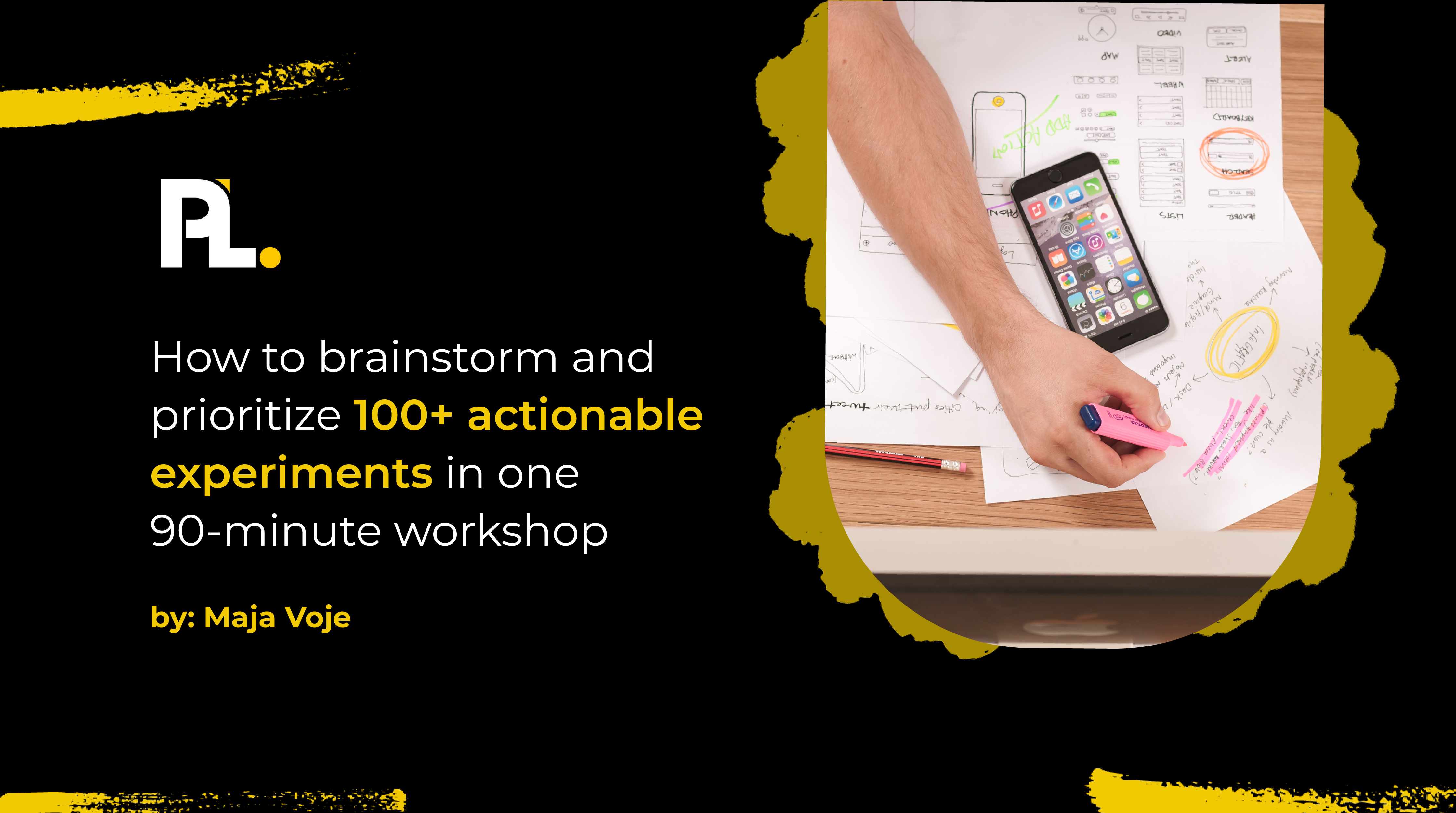
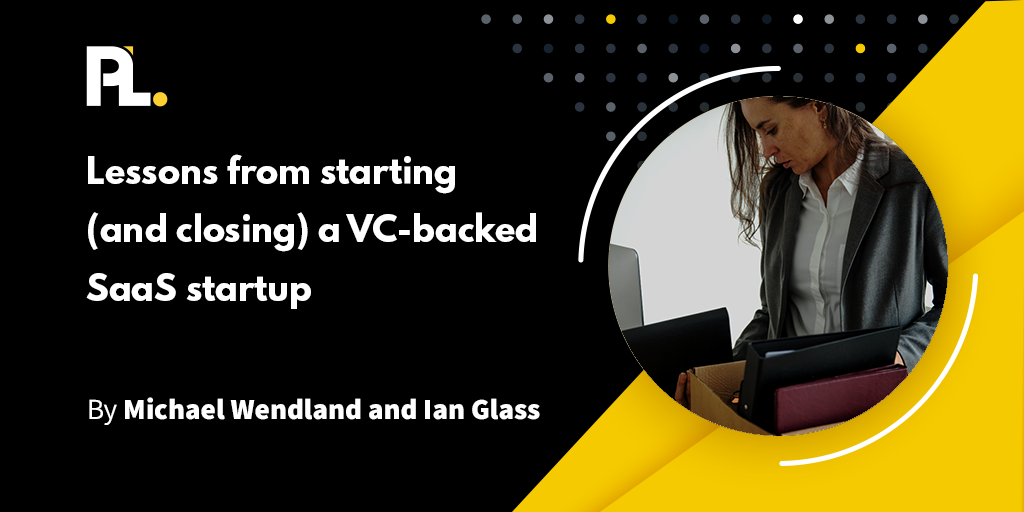
%20(1).png)


